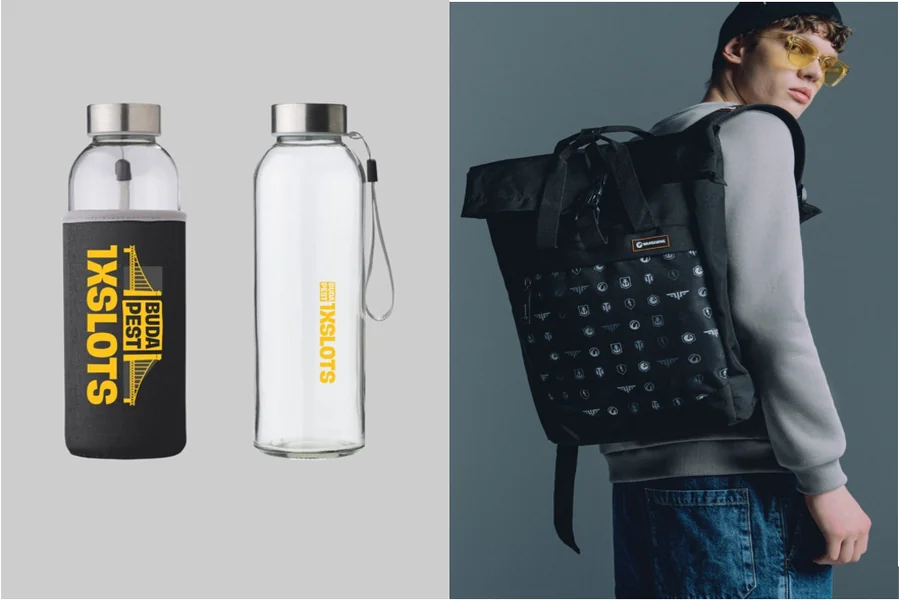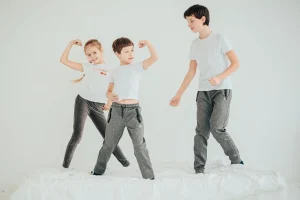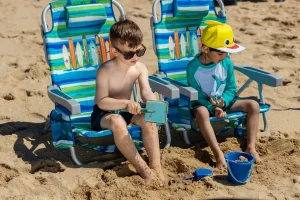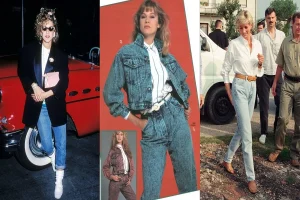How To Design Merch That Inspires And Sells

Imagine opening a box of merch—and seeing another plain white mug with a company logo. How often would you use it? Probably not much—it might end up gathering dust at the back of the cupboard. This kind of merch just doesn’t work anymore. People want merch that’s stylish, practical, and worth using in everyday life.
Stats reveal that corporate gifts help build stronger client relationships (82%) and drive higher employee engagement (63%). In other words, when done right, merch isn’t just a nice gesture—it’s a real business tool. It builds loyalty, boosts morale, and creates a sense of presence without saying a word.
Good merch speaks to people. It reminds, surprises, connects—even if it’s just for a second. It creates a small moment of connection—something real that lasts longer than a quick swipe on your phone.
So how do you make merch that people actually want to keep? That feels intentional—not generic? Here are a few tips that can help turn your merch from just “stuff” into something deeper.
Whether you’re designing for a big event, your internal team, or long-time business partners, these ideas will help you create pieces that feel authentic, useful, and worth keeping.
Know your audience
Before you start thinking about colors or logos, ask yourself a basic question: Who is this corporate merch for, and why are we giving it to them?
If you miss the “why,” you’re just designing for yourself—not the person who will wear or use it. And when there’s no purpose, you end up with something that looks okay—but feels empty.
Merch is more than a product. It’s a message, a moment, sometimes a memory. A hoodie for your engineering team shouldn’t feel the same as a tote bag for conference attendees. One is about belonging, the other is about experience. And if you just go for a safe design that “fits anyone,” it won’t really connect with anyone.
Design the feeling
Merch should fit the context it’s created for. Event merch, for example, should match the energy of the event itself. A hoodie for a crypto event should have sharp, modern design—bold but minimal, with just enough edge to feel innovative. Something that belongs in that world, not like it was designed from the outside.
Meanwhile, a marathon tee should create a totally different vibe. You’re aiming for that post-run adrenaline energy—something that says “I earned this.” And beyond the message, the T-shirt itself matters: it should be lightweight and breathable, ensure the freedom of movement and dry quickly.

Make gratitude tangible
Client and partner gifts are not only a nice gesture, but also a chance to say something meaningful: “thank you,” “you matter to us,” “you’re part of what we’re building.”
You can create that message through simple but intentional details. For example, design a custom hoodie and add a beautiful patch or embroidery featuring your brand’s message like “If you dream it, you can do it.” Or improve the packaging: don’t just use a plain kraft box—add a branded sticker and a personal note that says “Thank you for being with us all this time.” It will make your merch feel more intentional.
Create a sense of belonging inside the team
When it’s done with care, team merch becomes a badge of identity, a symbol of team spirit. It can mark big wins, make new hires feel at home, or just offer a little boost when the workload gets heavy. A good hoodie or tee can say what company-wide emails rarely do: you’re seen, you belong here.
According to statistics, recognition boosts motivation, strengthens connection, and improves retention. 83.6% of employees feel motivated by recognition, and 79% feel more connected when they receive branded merch. Companies using recognition merch see 17% lower turnover.
Watch current trends
What people choose to wear or use—and get excited about—is constantly changing. Fashion and tastes evolve faster than they seem, and if you’re not paying attention, your merch might already feel off-trend before you launch it. That doesn’t mean blindly following every trend—but it does mean knowing what’s out there. Your merch should feel fresh.
So it’s a great idea to keep an eye on:
- Streetwear—how people wear shapes, prints, and textures
- Graphic design—early signals in type, layout, and visual trends
- Home decor—what colors, forms, and atmospheres people choose
Print what you believe
Add warm, inspiring, or relatable messages. Sometimes, all it takes is one good line to make the merch feel personal. Words like “Love what you do,” or “If you can dream it, you can do it” might seem small, but they create an emotional spark—something that makes the item feel more personal and worth holding on to.
You can also bring your brand’s personality into the message: a quote from your founders, a playful motto, or a quiet reminder of what your company stands for. These little touches turn a T-shirt or notebook into memorable gifts that people actually wear and carry with them.

Go beyond
Merch gets a lot more interesting when you move past basic surface design. Embroidery, textured prints, custom tags, or better-quality fabrics can completely change how a piece looks and feels. It adds personality and makes your merch stand out—turning something generic into something people actually want to keep and wear. That’s what makes merch feel thoughtful—not just made for the sake of it.
There are many ways to make your piece more elaborate than a basic black or white tee, for example:
- Step out of a black-and-white palette so that your item speaks louder
- Choose oversized fits to offer comfort, ease, and a more inclusive look than regular cuts can
- Add more layers to create visual depth
- Go for embroidery to bring texture
- Try interchangeable patches so that the item becomes interactive and personal
Experiment with technology
Merch doesn’t have to stop at fabric and print. With just a little tech, you can turn a simple item into something interactive, surprising, and way more memorable. NFC tags or QR codes can add a digital layer to your physical product—one that invites people to explore, connect, or just smile.
What can you add there?
- Exclusive content—a private message from your team, a product teaser, or early access to a campaign
- Personalization—a custom “thank you” based on who’s receiving it, or a page tailored to their team or role
- Hidden playlists—music that matches the vibe of the design, the event, or even your company culture
- Behind-the-scenes content—show how the merch was made, or share the story behind the design
- Augmented reality—make your logo animate, let a product come to life, or create a fun interactive moment
These don’t have to be big-budget ideas. Even a small digital surprise can make someone pause, engage, and remember where it came from. The point isn’t to show off tech—it’s to make the experience more personal and a little more fun.
Make it useful
The best merch not only looks nice, but also serves a purpose. If you want people to keep and use what you make, think about how it fits into their day-to-day lives. A well-made item that adds value will always outlast something eye-catching that gets forgotten after one use.
Even wearables can be useful when you design with real life in mind. Is it something they’ll grab during a morning coffee? On a casual weekend? At their desk or on a quick errand? The more naturally your merch fits into people’s routines, the more likely it is to stay in use—and mean something.
Package the experience
Don’t stop at the merch—think about the moment when someone first unpacks it. A thoughtful unboxing experience adds surprise, delight, and value. That might mean branded tissue paper, a short printed note, or a tiny extra gift tucked inside.
You’re not just handing someone a hoodie. You’re creating a small story: the reveal, the message, the detail they didn’t expect. And that moment often decides whether they smile and share it—or set it aside and forget it.
About the author:
Tanya Tereshchenko is the Chief Graphic Designer at Swag42, where she turns brand stories into wearable experiences. With a background in fashion design, trend research, and brand identity, she sees strategy in every stitch. At Swag42, she helps bring style and comfort into the corporate world through merch people actually enjoy wearing and using.







